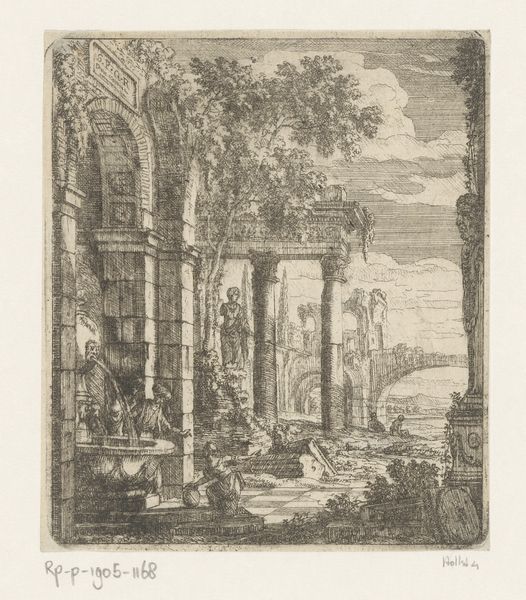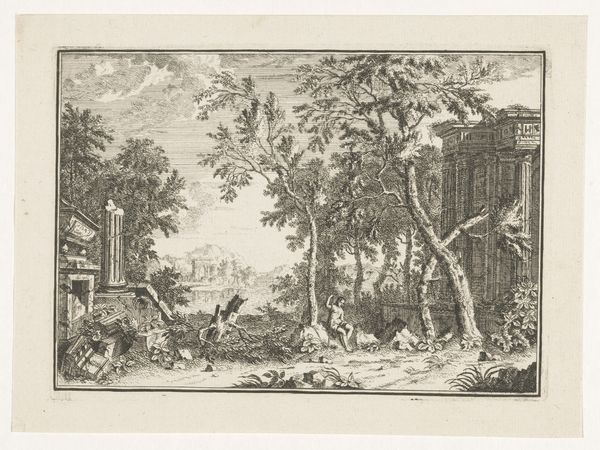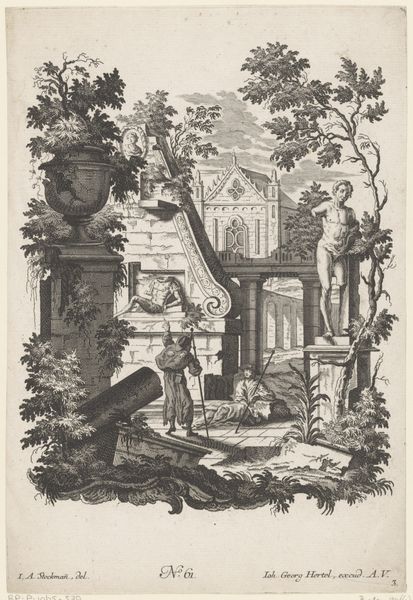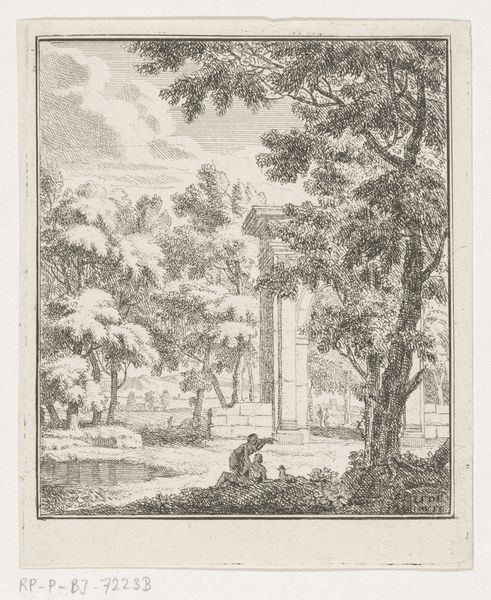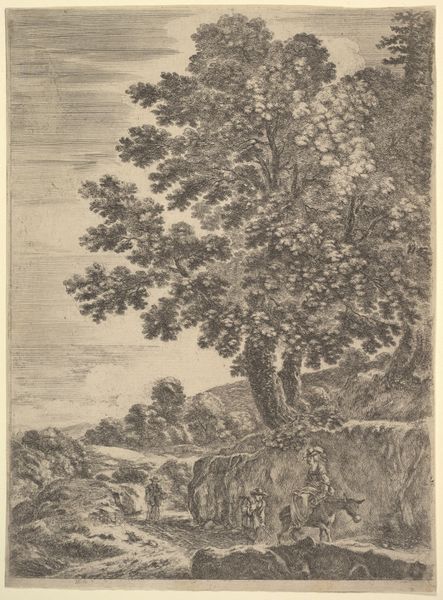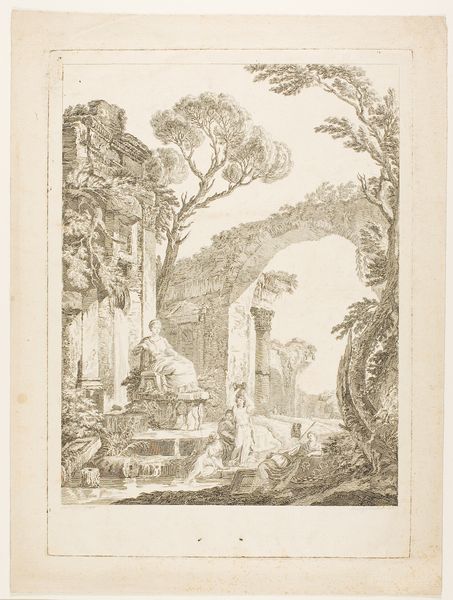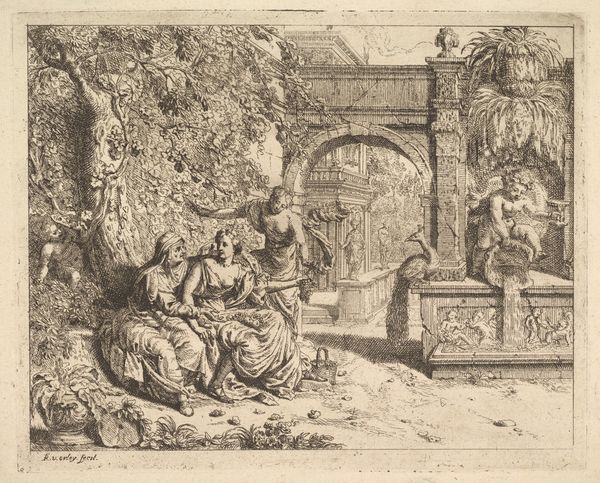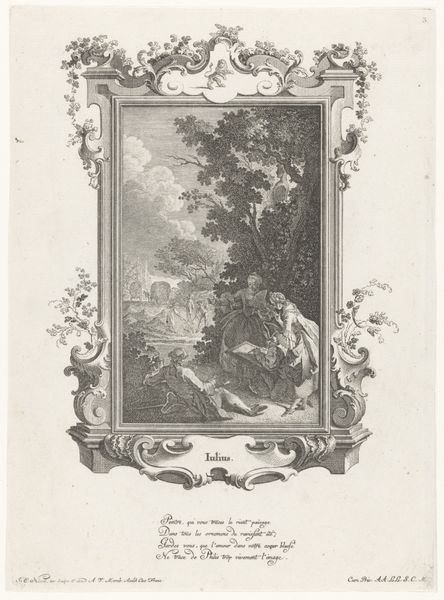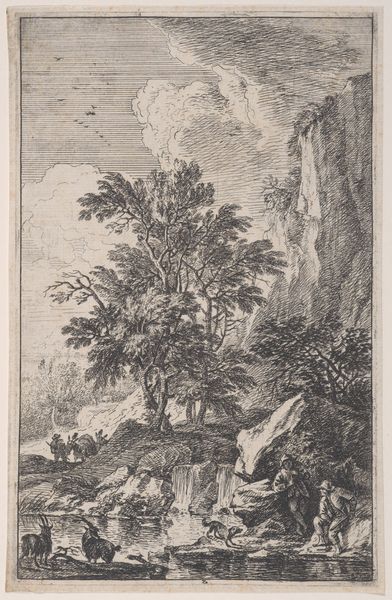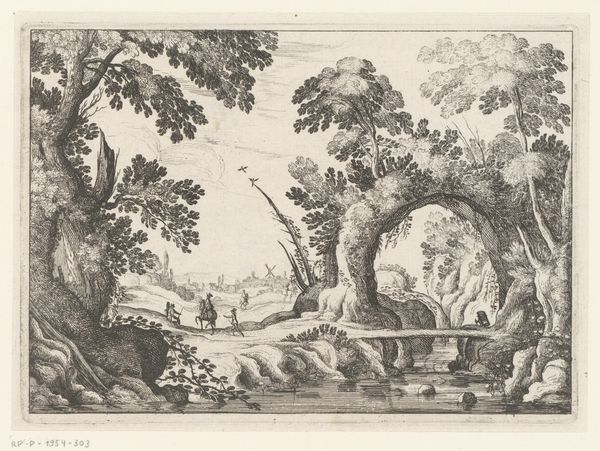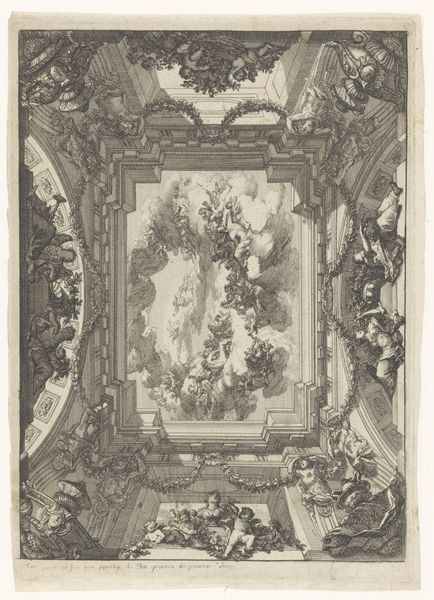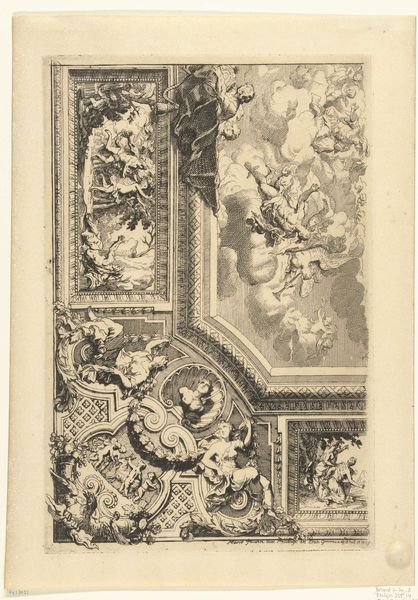
engraving
#
baroque
#
old engraving style
#
landscape
#
figuration
#
cityscape
#
history-painting
#
engraving
Dimensions: height 122 mm, width 101 mm
Copyright: Rijks Museum: Open Domain
Johann Oswald Harms created this etching, "Landschap met drie figuren bij antieke ruïnes," around 1673. The print was made by incising lines into a metal plate, likely copper. It is a sophisticated technology involving considerable material knowledge. After the image was created, the plate would have been inked and used to make multiple impressions. This reproductive process democratizes image-making, creating the possibility of wider circulation than a unique drawing or painting would allow. In this case, the landscape with figures and ruins is rendered with remarkable detail. Notice the artist's skillful handling of line to create a sense of depth and texture, from the crumbling architecture to the foliage. The fact that Harms chose to make an etching, rather than some other kind of artwork, speaks to its function within a developing market for images and its accessibility to a wider audience. It represents a shift away from unique handmade objects and toward mass production, which had profound implications for labor, politics, and consumption in the 17th century.
Comments
No comments
Be the first to comment and join the conversation on the ultimate creative platform.
